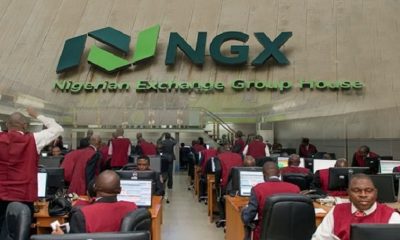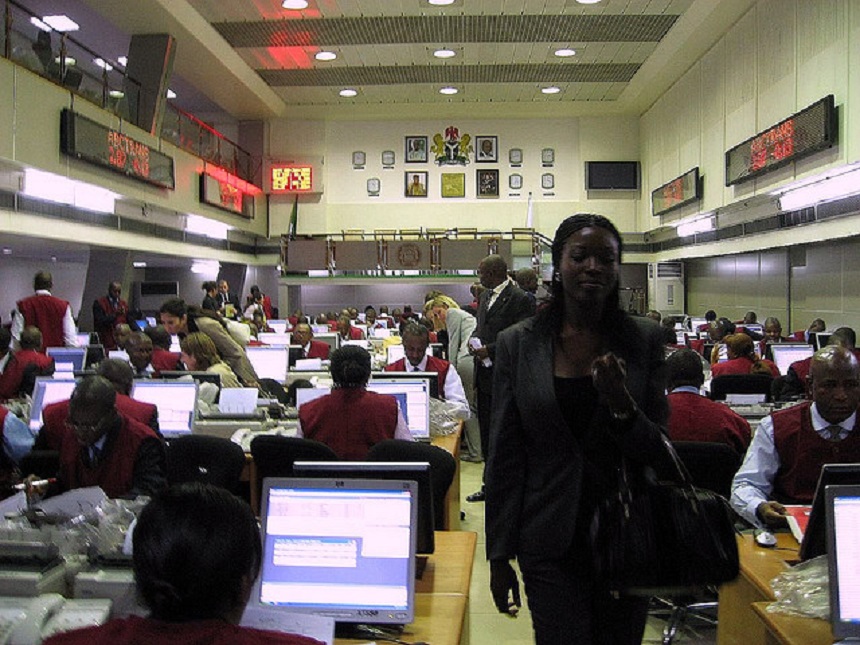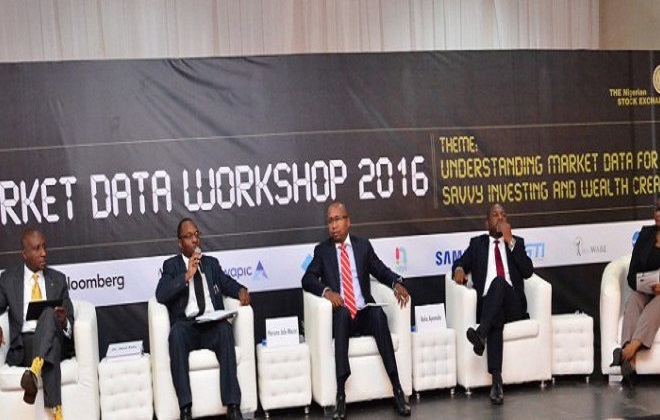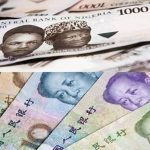Economy
All You Need To Know About Algorithmic Trading
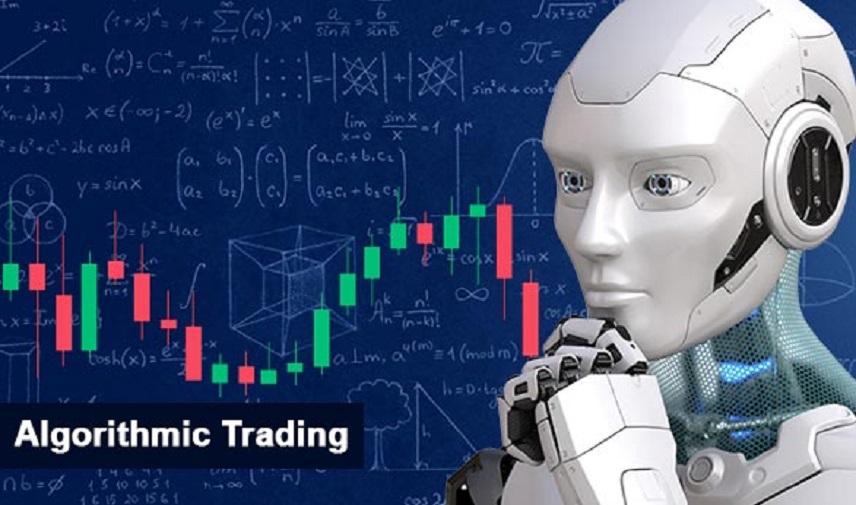
There are now more options to improve or expand existing apps due to the rapid advancement of computer science and communication technology. The current developments have opened up fresh trading avenues.
Trades are placed using a computer program that follows a predetermined set of instructions (an algorithm). This kind of trading is also known as automated, black-box trading, or algo-trading. Profits may be generated at a pace and frequency inconceivable for a human trader to achieve in principle.
Just because it’s computer-driven doesn’t imply no one is involved. As a result of automated trading, human involvement has been shifted to a more back-office position, where new alpha-seeking techniques are developed on a regular basis.
High-frequency trading (HFT) is the most common kind of algo-trading today, and it relies on preprogrammed instructions to place a large number of orders quickly across a variety of markets and decision factors.
In this article, we’ll provide you with information on what are the main things that every trader should know about algorithmic trading.
How does algo trading work?
Pre-programmed instruction is used in algorithmic trading to execute transactions. Input characteristics like price, time, volume, and more are taken into consideration by these laptop applications. In order to make use of the processing power and speed of modern computers, several types of systems are employed. Automated trading is primarily a rapid, reliable, and accurate technique of placing orders. However, not everyone can apply this strategy, and some people may have doubts about its efficacy.
Because the decision to buy or sell is based only on the composite programs, algorithmic trading is a generally recognized method. There is no human intervention in making the transactions, which eliminates the influence of emotions. There are several ways to learn more about the way algorithmic trading works. One of the most common ways for investors is to visit an education section of Elite Currensea, where they can get more information about algo trading and its benefits. In addition to that, the section allows traders to generate trading strategies based on AI. Computers are better at completing tasks quickly than people are. Depending on the specifications, it can execute and monitor a variety of stocks at the same time.
There are no trades left unattended, thus it is quite skilled and resourceful. When traders take a break, the robot takes care of online share trading orders.
As a primary benefit, algorithmic trading removes human emotions from the trading process. Trades are carried out in accordance with a predetermined set of guidelines. Human trading, as opposed to algorithmic trading, is more susceptible to illogical trading choices due to human emotions. Thus, algo-trading often pushes traders to avoid taking on more risk than they can manage in order to prevent feelings of uncertainty.
For those interested in learning about algorithmic trading, the online education market has grown rapidly in the last several years. Getting into this field is now feasible without having to go through the lengthy academic path (8-10 years).
What are the main pros of algorithmic trading?
Individual involvement is minimal when it comes to algorithmic trading. Orders made on the basis of various technical indications are automatically distributed using digital means. Simple data access is all that is required for these gadgets. By not having to worry about losing money, they are safer than human dealers. Another advantage of these systems is that they may be quite profitable. However, there are several difficulties to overcome. Basic computer abilities are required for success in algorithmic trading.
Algorithmic trading’s performance is heavily reliant on precision and timeliness. The margin of error in algo trading is often extremely large if humans are involved. It’s possible for a computer to conduct transactions under a set of instructions, but this isn’t the case for algo-trading banks. As a result, strategic thinking is emphasized in order to help businesses make better, more accurate trade choices.
Moreover, there is no opportunity for traders to be influenced by their emotions since the tactics are pre-formulated. This means that once the pre-specified goals are satisfied, the deal is automatically performed, and the trader is left with no choice except to accept it as is. Over- and under-trading are kept in check by algo trading. As a result, there is no tolerance for error or divergence from the original trading plan.
A trader’s job is to identify the weak points in their trading system and devise workarounds as early as possible in order to prevent more losses. Trading algorithms allow traders to back-test their trades using historical data and compare them to the current market conditions. Using this approach, traders may determine for certain if their deals would have turned out identically.
Trading algorithms used in algo trading execute deals without human intervention. In response to market changes, the algorithm creates orders as soon as they are met. The trading process relies heavily on the quickness of entry and exit. Even a delay of a few seconds might result in losses. Better entry and exit speeds allow traders to catch market moves at their precise moment of entrance.
With the advent of automated trading, traders now have the chance to experiment with a wider range of trading platforms. Individuals and businesses may effectively and quickly exchange huge volumes of shares. Market participants may thus acquire a large number of shares and then sell them nearly immediately for a significant profit.
Algorithms and computers are used in algo trading. Because of this, executing many trades and strategies simultaneously becomes quite simple. Humans just could not have accomplished this.
Economy
CSCS, Geo-Fluids, FrieslandCampina Lift NASD OTC Bourse by 0.62%
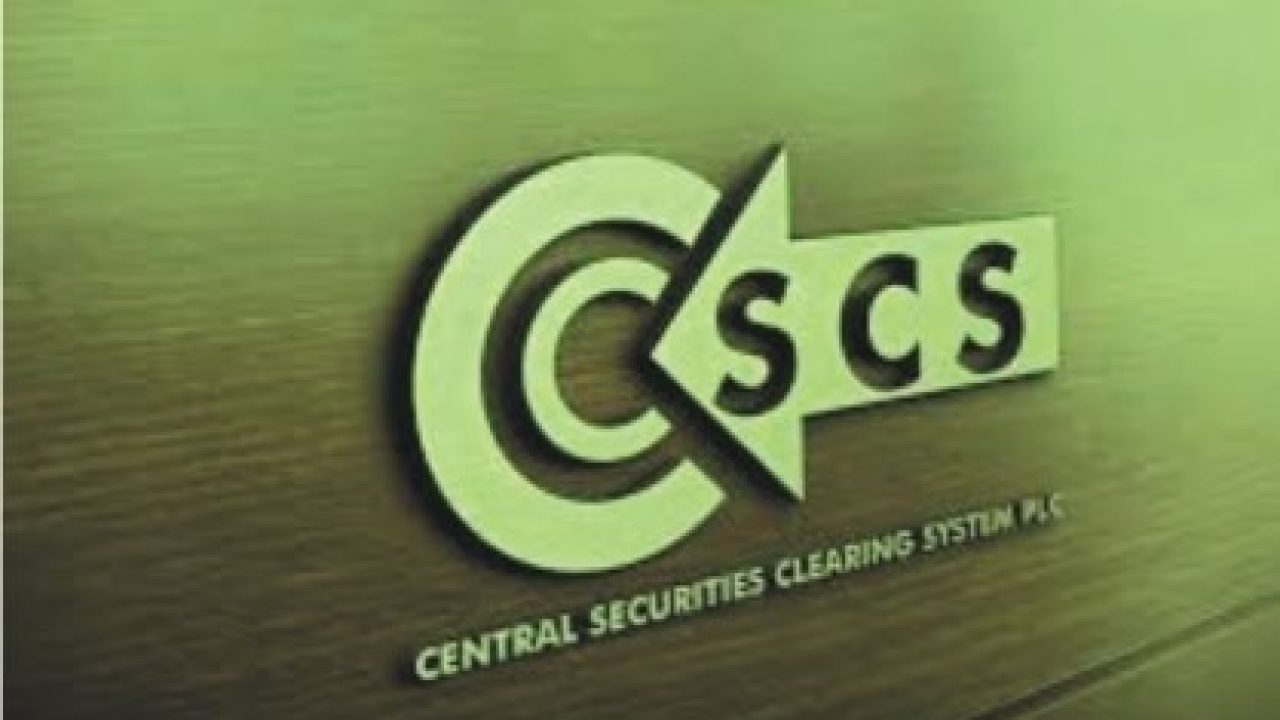
By Adedapo Adesanya
Three bellwether stocks lifted the NASD Over-the-Counter (OTC) Securities Exchange by 0.62 per cent on Friday, December 12 with the NASD Unlisted Security Index (NSI) jumping by 22.20 points to 3,600.43 points from 3,578.23 points.
In the same vein, the market capitalisation of the trading platform increased by N13.28 billion to close at N2.154 trillion from the previous day’s N2.140 trillion.
During the session, Central Securities Clearing System (CSCS) Plc went up by N2.53 to close at N39.71 per share compared with the previous day’s N37.18 per share, Geo-Fluids Plc added 35 Kobo to its price to finish at N5.00 per unit versus Thursday’s closing price of N4.65 per unit, and FrieslandCampina Wamco Nigeria Plc appreciated by 23 Kobo appreciation to sell at N60.23 per share versus N60.00 per share.
It was observed that yesterday, the price of Golden Capital Plc went down by N1.05 to N9.45 per unit from N10.50 per unit, and UBN Propertiy Plc declined by 21 Kobo to N2.01 per share from the N2.22 per share it was traded a day earlier.
There was a significant improvement in the level of activity for the day, as the volume of transactions increased by 6.2 per cent to 37.4 million units from the previous day’s 35.2 million units, the value of trades went up by 265.1 per cent to N4.9 billion from N1.4 billion, and the number of deals soared by 13.80 per cent to 33 deals from 29 deals.
Infrastructure Credit Guarantee Company (InfraCredit) Plc ended the last trading day of this week as the most active stock by value on a year-to-date basis with 5.8 billion units valued at N16.4 billion, the second spot was taken by Okitipupa Plc with 178.9 million units traded for N9.5 billion, and third space was occupied by a new comer in MRS Oil Plc with 36.1 million units worth N4.9 billion.
InfraCredit Plc also finished the session as the most active stock by volume on a year-to-date basis with 5.8 billion units transacted for N16.4 billion, followed by Industrial and General Insurance (IGI) Plc with 1.2 billion units valued at N420.3 million, and Impresit Bakolori Plc with 537.0 million units sold for N524.9 million.
Economy
Guinness Nigeria, Others Buoy NGX Index 1.00% Growth

By Dipo Olowookere
The bullish run on the Nigerian Exchange (NGX) Limited continued on Friday with a further 1.00 per cent growth buoyed by gains recorded by Guinness Nigeria, Champion Breweries, and others.
Data showed that the consumer goods space expanded by 1.53 per cent during the last trading session of the week, as the insurance counter grew by 0.51 per cent, and the industrial goods sector marginally gained 0.01 per cent.
However, the banking index depreciated by 0.54 per cent due to a pocket of profit-taking, and the energy industry shrank by 0.09 per cent, while the commodity sector closed flat.
Guinness Nigeria gained 10.00 per cent to trade at N217.80, Morison Industries rose by 9.84 per cent to N4.69, Champion Breweries jumped by 9.69 per cent to N14.15, Austin Laz grew by 9.66 per cent to N2.27, and C&I Leasing appreciated by 9.62 per cent to N5.70.
Conversely, eTranzact lost 10.00 per cent to finish at N12.60, Chellarams slumped by 9.00 per cent to N13.20, Eunisell depleted by 9.89 per cent to N75.15, Africa Prudential moderated by 9.77 per cent to N12.00, and DAAR Communications decreased by 9.18 per cent to 89 Kobo.
The busiest stock on Friday was Access Holdings with 107.6 million units sold for N2.2 billion, Consolidated Hallmark traded 59.9 million units worth N245.8 million, Zenith Bank transacted 48.2 million units valued at N3.1 billion, Transcorp Power transacted 42.8 million units for N13.1 billion, and Champion Breweries exchanged 36.4 million units valued at N510.2 million.
At the close of business, a total of 602.8 million units worth N30.7 billion exchanged hands in 20,550 deals yesterday, in contrast to the 529.7 million units valued at N12.3 billion traded in 18,159 deals on Thursday, representing a surge in the trading volume, value, and number of deals by 13.80 per cent, 149.59 per cent, and 13.17 per cent apiece.
Business Post reports that the All-Share Index (ASI) soared during the session by 1,485.89 points to 149,436.48 points from 147,950.59 points and the market capitalisation moved up by N945 billion to N95.264 trillion from N94.319 trillion.
Economy
Naira Chalks up 0.11% on USD at NAFEM as CBN Defends Market
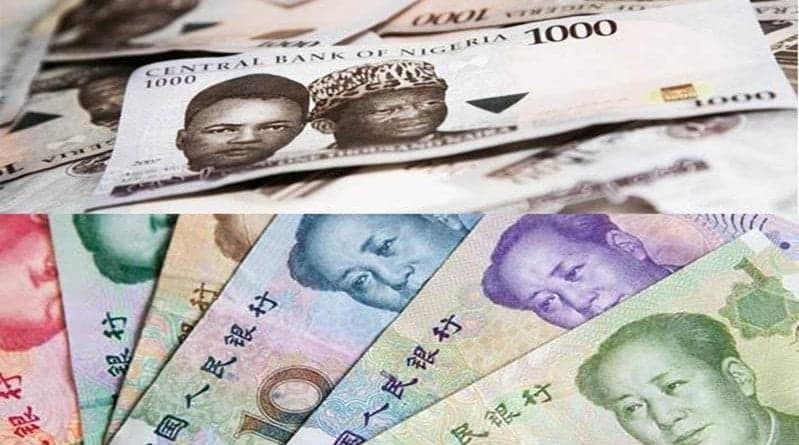
By Adedapo Adesanya
An intervention of the Central Bank of Nigeria (CBN) in the foreign exchange (FX) market eased the pressure on the Naira on Friday.
The apex bank sold forex to banks and other authorised dealers in the official window to defend the domestic currency, helping to calm the FX demand pressure, with the Nigerian currency appreciating against the US Dollar in the Nigerian Autonomous Foreign Exchange Market (NAFEM) by 0.11 per cent or N1.57 to sell at N1,454.50/$1 compared with Thursday’s closing price of N1,456.07/$1.
Also, the domestic currency improved its value against the Pound Sterling in the official market yesterday by N3.95 to close at N1,946.15/£1 versus the previous day’s N1,950.11/£1 but lost 10 Kobo on the Euro to quote at N1,706.46/€1 compared with the N1,706.36/€1 it was exchanged a day earlier.
At the black market segment, the Nigerian Naira maintained stability against the Dollar during the session at N1,470/$1 and also traded flat at N1,463/$1 at the GTBank forex counter.
Despite the sigh of relief, demand pressures outweighed the robust supply from the CBN and inflow from offshore players looking to participate at the OMO bills auction.
Gross FX reserves increased for the twenty fifth consecutive week, growing by a strong $396.84 million week-on-week to $45.44 billion.
As for the cryptocurrency market, it was down on Friday as pressure remained after Federal Reserve chair Jerome Powell’s speech on Wednesday, which hinted at a possible rate cut pause in January. As a result, markets now expect only two rate cuts in 2026 instead of three.
However, Chicago Federal Reserve President Austan Goolsbee, who was against a December rate cut, said he expects more in 2026 than the current median projection.
Ethereum (ETH) slumped by 5.1 per cent to $3,090.61, Solana (SOL) declined by 4.5 per cent to $132.79, Cardano (ADA) depreciated by 3.8 per cent to $0.4103, and Dogecoin (DOGE) dropped 2.5 per cent to trade at $0.1373.
In addition, Bitcoin (BTC) lost 2.4 per cent to sell at $90,342.74, Litecoin (LTC) tumbled by 1.9 per cent to $81.86, Binance Coin (BNB) fell by 0.6 per cent to $886.93, and Ripple (XRP) slipped by 0.5 per cent to $2.02, while the US Dollar Tether (USDT) and the US Dollar Coin (USDC) traded flat at $1.00 each.
-

 Feature/OPED6 years ago
Feature/OPED6 years agoDavos was Different this year
-
Travel/Tourism9 years ago
Lagos Seals Western Lodge Hotel In Ikorodu
-

 Showbiz3 years ago
Showbiz3 years agoEstranged Lover Releases Videos of Empress Njamah Bathing
-

 Banking7 years ago
Banking7 years agoSort Codes of GTBank Branches in Nigeria
-

 Economy3 years ago
Economy3 years agoSubsidy Removal: CNG at N130 Per Litre Cheaper Than Petrol—IPMAN
-

 Banking3 years ago
Banking3 years agoFirst Bank Announces Planned Downtime
-

 Banking3 years ago
Banking3 years agoSort Codes of UBA Branches in Nigeria
-

 Sports3 years ago
Sports3 years agoHighest Paid Nigerian Footballer – How Much Do Nigerian Footballers Earn





